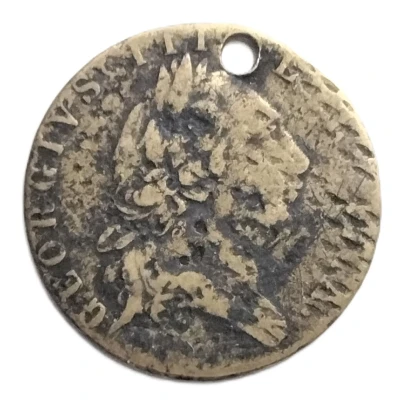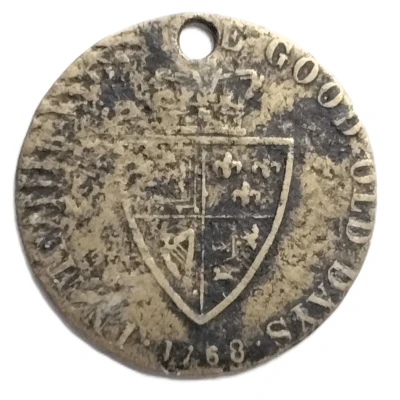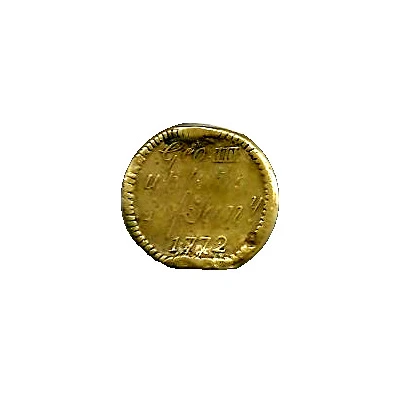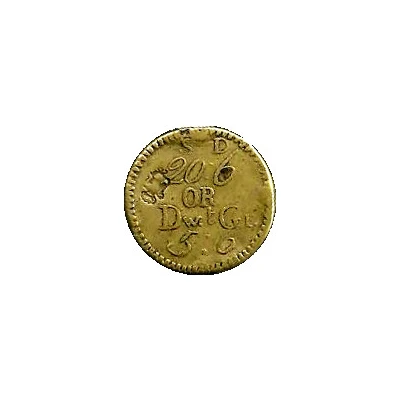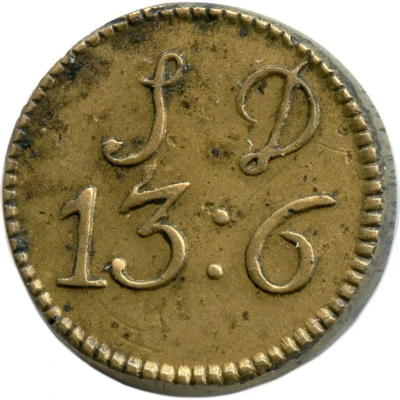


© hareluca
½ Moidor Coin Weight ND
| Brass | 5.36 g | 17 mm |
| Location | United Kingdom (United Kingdom, British Overseas Territories and Crown Dependencies) |
|---|---|
| King | George III (1760-1820) |
| Type | Weights › Coin weights |
| Years | 1770-1816 |
| Composition | Brass |
| Weight | 5.36 g |
| Diameter | 17 mm |
| Thickness | 2.7 mm |
| Shape | Round |
| Orientation | Medal alignment ↑↑ |
| Updated | 2024-11-14 |
| Numista | N#350234 |
|---|---|
| Rarity index | 97% |
Reverse
Script: Latin
Lettering:
S D
13:6
Translation: 13 shillings 6 pence
Edge
Plain
Comment
A Portuguese gold coin principally the 4 cruzado piece struck in large quantities from 1663 to the 1720's. Multiples of 2½ and 5 moidore were also issued. After the discovery of gold in Brazil (a Portuguese colony until 1822) the Bahia and Rio mints issued even greater amounts of these coins until the 1770's. The word 'moidore' is a contraction of moeda de ouro or literally 'money of gold'. The design on these coins is the crowned Arms of Portugal on the obverse and the distinctive Cross of Jerusalem on the reverse. Under the universal name of moidore it became the most commonly traded coin in the New World and was internationally the principal gold coin of the 18th century.The earliest coinweights usually just have the word MOIDORE or a contraction of it on one side and the Cross of Jerusalem on the other. The value of 27 shillings is also shown on the later weights (in script probably from the 1770's) - 13s 6d for the half moidore and 6s 9d for the quarter moidore.
Coins probably still circulated until the great recoinage of 1816
Full article https://www.ukdfd.co.uk/ceejays_site/pages/Coinweight4.htm
